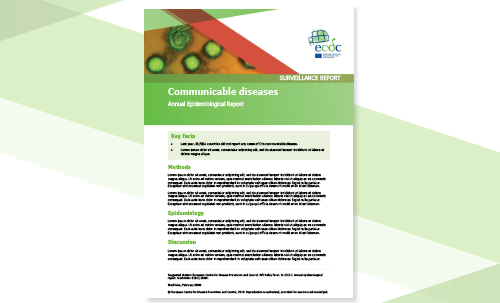An article was published in Chemistry World describing a test developed at the University of California, Irvine to diagnosing bacterial infection and whether the bacteria contain a variety of antibiotic resistance genes. The test is sensitive (10–100 times better than existing methods) and provides the results within an hour. The assay can analyze whole blood and uses the polymerase chain reaction. The test eliminates the need for sub-culturing of the blood. The method uses a microfluidic device that mixes the whole blood sample with PCR reagents, which work with whole blood, and then turn this mixture into millions of individual picolitre-sized droplets. After the PCR reaction, droplets containing particular genetic targets become fluorescent and are detected and quantified by a high throughput 3D particle counter. As the sample is being analyzed, the counter moves the sample up and down, and rotate it. The test allows the use of one milliliter of blood and the higher volume increases the probability of detecting bacteria. @ https://www.chemistryworld.com/news/test-for-antibiotic-resistance-genes-provides-answers-within-an-hour/4011130.article
Mary-M
Whole blood method for diagnosing bacterial infections has unprecedented speed and sensitivity
Mary-M
A report by the UK government showed that in 2018 a total of 607 confirmed cases of STEC O157 were reported in England and Wales. The lowest incidence of STEC O157 was in London (0.6 per 100,000 populations) and the highest in the North East (1.99 per 100,000 populations). The highest incidence of infection was in children younger than 5 years. Thirty percent of confirmed STEC O157 cases were hospitalized, and 2% developed HUS. In 2018, 612 non-O157 STEC cases (567 in England; 45 in Wales) were reported. The number of STEC O157 cases in England increased in 2018 but remained below pre-2015 levels. Four outbreaks of STEC involving 55 cases in England were investigated in 2018. In England, the most commonly non-O157 STEC serogroup was O26 (17% of non-O157 cases), with 17% of cases followed by O91, O146, O128ab, and O117. The number of cases of non-O157 reported in 2018 (612) is much higher than the 385 reported in 2017. @ https://www.gov.uk/government/publications/escherichia-coli-e-coli-o157-annual-totals/shiga-toxin-producing-escherichia-coli-stec-data-2018
ruth
The annual report of the European Centre for Disease Prevention and Control (ECDC) is based on data for 2017 retrieved from The European Surveillance System on 11 December 2018. Salmonellosis remains the second most common disease which is transmitted to humans from animals in the EU/EEA and the significant decrease observed from 2004–2013 appears to have leveled off since. The report found 92,649 cases were reported, of which 156 were fatal. The United Kingdom recorded 57 of these deaths. The EU/EEA notification rate was 19.6 cases per 100 000 population. The notification rate was highest in young children 0−4 years with 94.1 cases per 100 000 population, eight times higher than in adults 25–64 years. In 2017, Salmonella was the most common cause of foodborne outbreaks, accounting for 24% (1 241) of all reported foodborne outbreaks. The most commonly identified vehicles in these outbreaks continue to be eggs and egg products. Antimicrobial resistance was commonly observed in Salmonella isolates from humans in 2017. However, only a small fraction of the bacteria were resistant to both of the critical antimicrobials (fluoroquinolone and 3 rd generation cephalosporin). Proper Salmonella control measures at the primary production level and sufficient laboratory capacity is a prerequisite to reduce Salmonella prevalence in food-producing animals. @ https://www.ecdc.europa.eu/en/publications-data/salmonellosis-annual-epidemiological-report-2017
Salmonellosis is the second most commonly reported gastrointestinal infection and an important cause of foodborne outbreaks in the EU/EEA.
ruth
A review article published in the J. Food protection (Volume 83,1) summarized many published studies that reported the growth and/or survival of L. monocytogenes on intact fruit and vegetable surfaces. The majority of studies reviewed focused on melons, leafy greens, berries, or sprouts.
The review showed that the outer surface of fruits and vegetables was not a favorable environment for the growth of L. monocytogenes. Nevertheless, L. monocytogenes growth and/or survival was observed under some handling and storage conditions along the supply chain. The survival was dependent on surface characteristics, commodity, temperature, relative humidity, storage matrix (e.g., package, container), and starting inoculum concentration. Intact produce held at ≥20°C had the highest L. monocytogenes growth rates. The identification of produce commodities that support L. monocytogenes growth and/or survival at various conditions along the supply chain can assist the industry in managing L. monocytogenes contamination risk.
Image: Fruits-vegetables @ https://jfoodprotection.org/doi/pdf/10.4315/0362-028X.JFP-19-283



